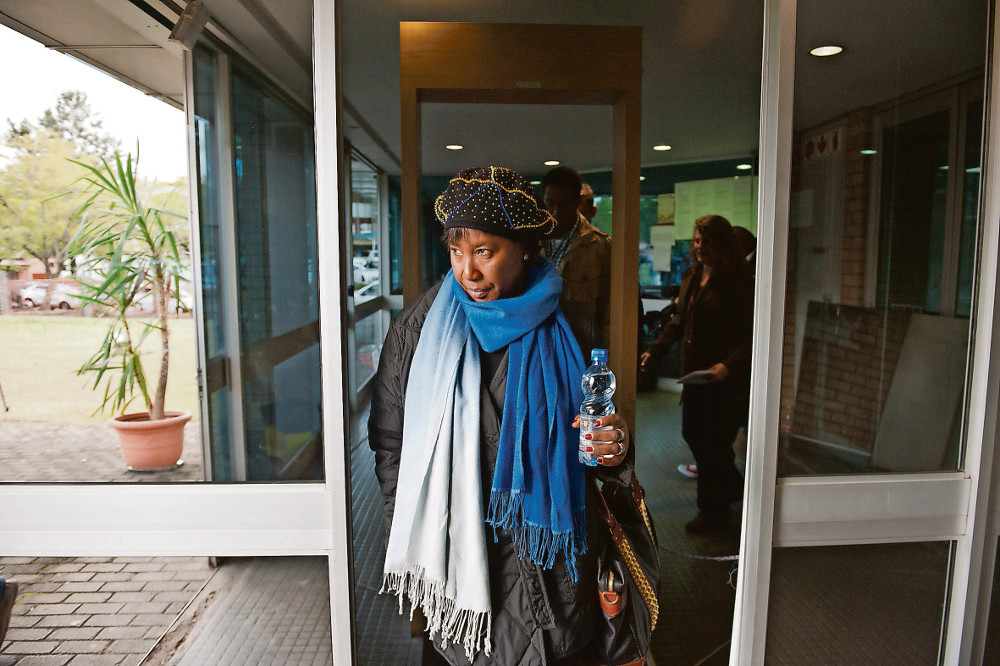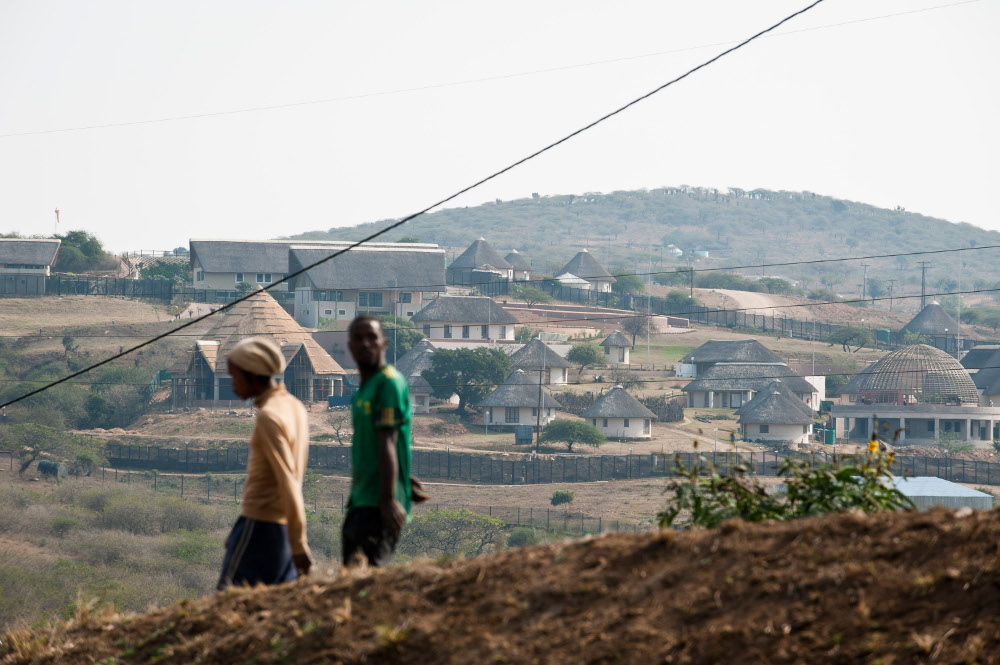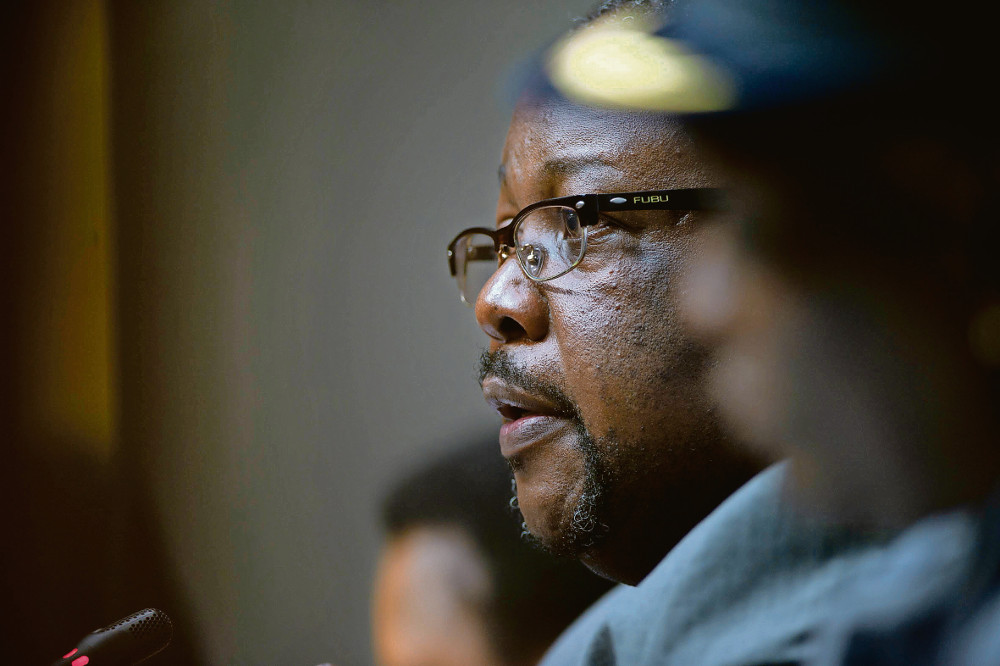Nelson Mandela paid for a lot of the work on his Qunu home himself
Five and half years after the first bald-faced lie about Nkandla, a Cabinet minister has taken to invoking the name of the late Nelson Mandela in a new attempt at defending state spending at President Jacob Zuma’s private home.
And the truth is, again, a casualty.
“It’s a swimming pool built by my grandfather’s money. In the summer my children swam in it. It was not built by the government,” said Madiba’s eldest grandchild, Ndileka Mandela, this week about a suddenly debatable body of water held in a man-made container sunk into the ground in Qunu in the Eastern Cape.
Until last week, that body of water was and always had been a swimming pool, as far as anyone was concerned.
Then Police Minister Nathi Nhleko started to tour with his latest “findings” on Nkandla – that Zuma is not liable to repay taxpayers any of the more than R200-million spent on Nkandla – and things grew confused.
“The reactions have been quite interesting, very, very, very interesting,” Nhleko told the South African National Editor’s Forum last week, referring to reactions to his Nkandla report after its public release.
“For an example, we were then told that there has never been a problem with the question of the construction of a firepool, because also a firepool does exist in Qunu as well.”
Though various Cabinet ministers and Zuma himself have come under severe pressure on Nkandla in the past five years, few have ventured to compare it with Mandela’s retirement home in Qunu at all, and then only glancingly.
In thousands of pages of official reports and documents and many hours of debates in Parliament and press conferences the Mail & Guardian could find not a single reference to a Qunu firepool.
Ndileka Mandela said she would not be distracted by “politics”. Further than setting the record straight, speaking off the record, various other people who were in Mandela’s inner circle expressed outrage at the conflation between the two presidential homes.
“He [Mandela] wanted to build a pool for the small children; you know how he was about the children,” said one former Madiba confidant. “The government, they tarnish that because they are trying to make a scandal go away.”

Ndileka Mandela says her grandfather used his own money to build a swimming pool for the children at his home in Qunu. (Delwyn Verasamy, M&G)
Another said Mandela had been in the habit of paying for work on his residences himself, even when they arguably related to his security needs as a head of state, “because he was jealous of tax money being used to uplift the poor”.
This December will see the sixth anniversary of the Nkandla saga and the very first official lie about it: that there was no state spending at the homestead whatsoever.
When the M&G first approached government for comment about the upgrades to Zuma’s home in 2009, both the department of public works and the presidency disclaimed all know-ledge of the project.
In the time since, the government narrative on Nkandla has changed several times.
Officials initially contended that they would face prison if they were to reveal how much taxpayer money was spent on Nkandla, but eventually submitted detailed financial breakdowns for public consideration.
Cabinet ministers at one time warned that publishing photos of Nkandla was a possibly actionable breach of Zuma’s security, but now include aerial photographs and detailed depictions of its security feature in their own presentations.
The police ministry last Thursday referred questions about the Qunu body of water formerly known as a swimming pool to the public works department, which responded that it would absolutely not comment on the issue.
Nhleko’s maths wrong by R40m
In the last week Police Minister Nathi Nhleko has, seemingly of his own volition, appeared in public to talk about Nkandla in what has all the makings of a charm offensive. As with his May report, however, the material he is working with suffers many severe defects.
Some of the most notable are:
- Nhleko continues to insist that an often-cited total state spending on Nkandla is R40-million too much. “According to the media and some opposition parties, the cost had escalated and gone up to R246-million and so on, R246-million and at some point R247-million,” Nhleko told journalists again last week. He cannot imagine where the extra R40-million comes from because he believes the correct number to be R206-million. This is despite the fact that public protector Thuli Madonsela used a colour-coded table in her report on Nkandla to explain how she, not media or opposition parties, came to conclude Nkandla would cost the public R246 631 303.04. She noted that this was a conservative estimate, and excluded ongoing maintenance costs.
- Nhleko initially, in his May report, claimed that Madonsela had found that the state had not built any houses for President Jacob Zuma. After Madonsela corrected him he slightly altered his own approach. “In reviewing and evaluating the whole range of, you know, documents and speaking to people, we couldn’t come up with evidence or a record of where the president or a member of his family requested anything to be constructed, including security features,” Nhleko said. In fact, Zuma himself told Madonsela that he had requested the building or a larger kraal. In all other instances, such as a request for a larger swimming pool, the requests came from the principal Zuma architect – who was appointed by and acted as his agent.
- Nhleko’s ever-reducing number for the actual amount spent on security upgrades – R50-million, as rounded down from R50 523 884.88 this week – relies on some disturbing calculations. To reach that amount he excludes at least R20.6-million on professional and consultancy fees the government paid on the basis that it was a necessary expense to get the upgrades done, some R136-million that was budgeted for and paid as security upgrades and at various times considered integral to providing Zuma with security, and some R40-million more that will have to be spent before the project is finally completed. – Phillip de Wet

Upgrades to President Jacob Zuma’s house in rural KwaZulu-Natal are estimated to have cost about R246-million. (Madelene Cronjé, M&G)
Reports solve the ‘village’ mystery
Police Minister Nathi Nhleko is utterly perplexed. Someone, somewhere, approved the building of what he describes as “a village” or “a lodge or something” just outside President Jacob Zuma’s rural Nkandla home, a group of 21 houses with three bedrooms each, and he does not know who, or why, or what they were intended for.
The mystery houses became a big part of Nhleko’s recent tour, in which he addressed journalists
on Nkandla twice in the space of a week because, he says, they [the houses] make up a very large component of the more than R200-million already spent on Nkandla.
“Two critical issues that have got to be followed up is who took the decision that the 21 houses in which we spent R135-million, that have got nothing to do with the president’s homestead, needed to be constructed,” Nhleko told the National Press Club in Pretoria last Tuesday. “That is one thing. We need to follow up on that one. But also, importantly, who took the decision that the R135-million spent on the construction of those houses should form part of what we now call the security upgrades.”
When asked at an earlier briefing, to the South African National Editors’ Forum, why the vacant houses were not being used to house Zuma’s protectors (who, instead, stay in commercial accommodation quite some distance away), Nhleko said the question was undermined by conjecture.
“You are also assuming that it is for housing bodyguards. That is your assumption.”
Although the police minister’s months-long investigation failed to find the truth, the Mail & Guardian managed, by dint of a quick scan through various documents, to locate the information he needs in just under 30 seconds, half of which was wasted by misspelling “accommodation” in an in-document search box on the first attempt.

Nathi Nhleko cannot fathom why 21 houses were built next to Nkandla. (David Harrison, M&G)
In her March 2014 report Secure in Comfort, public protector Thuli Madonsela explained the mystery succinctly. She relates that on October 23 2009, a divisional police commissioner (the organisation that falls under Nhleko’s control) wrote to the director general of the department of public works (which assisted Nhleko in preparing his report, to say: “By instruction of the state president, President Zuma, the existing house at Nkandla currently accommodates SAPS members, must be converted as part of the president’s household. To cater for the needs of the members currently accommodated in the house as referred to above, additional bachelor flats need to be added to the needs assessment previously provided to your department.”
Madonsela even helpfully underlined the first bit about it being an apparent instruction from the president.
Elsewhere in her report Madonsela points out that both former public works minister Geoff Doidge (still in public employ as ambassador to Sri Lanka) and former deputy public works minister Hendrietta Bogopane-Zulu (still in government employ as deputy minister of social development) were personally present at meetings where the accommodation plans were discussed.
Yet Nhleko cites Madonsela’s report as a reference in his own report, other omissions and mistakes in his report strongly suggest that he did not have access to the widely published and freely available Madonsela report.
However, information on who authorised the building of the houses and why could also be found in other sources, including:
- An August 2014 report on Nkandla by the Special Investigating Unit, explaining how the police requested one house and 14 bachelor flats to be built for its members, plus further staff quarters later added to the list, and the defence force had asked for accommodation for six members;
- A November 2013 report on Nkandla by Parliament’s joint standing committee on intelligence, which noted security cluster departments agreed on the need for “the building of a security compound to house security and support staff (such as police and medical)”;
- An October 2012 statement on Nkandla from the public works department, which explained “the building of a security compound to house security and support staff” was required as it was decided that “security forces and other government employees would have to be accommodated locally”; and
- A December 2009 statement from the presidency, saying that “the security services have to construct accommodation facilities for their staff who attend to the president”. – Phillip de Wet
‘Nkandla not Zuma’s problem’
“Nkandla is not Jacob Zuma’s issue”. This was the gruff bark of the ANC’s secretary general Gwede Mantashe when he addressed journalists on Wednesday evening. And this was the unequivocal snap at those who dared to raise the issue at a week-long alliance meeting held at Zuma’s behest.
It was a subtle threat, an insider told the Mail & Guardian, and was also aimed at Zuma’s detractors inside the ANC: blame Zuma and face the consequences. The ANC would not have any talk that he should be held accountable and it will not be spoken about again.
When the debate surfaced at the summit meeting, Zuma’s usual defenders shielded him.
How dare an ANC leader suggest what the opposition has been calling for? Zuma would never #PayBackTheMoney, was their response.
The party line has been made official. “The alliance calls on government and the courts to conclude all civil, criminal and disciplinary matters directed at those responsible for the gross inflation of both the scope and costs of the project,” Mantashe said. And if you dare disagree? “Suggestions to the contrary are part of an attempt to delegitimise the head of state and our … government.”
There have always been pockets of dissent in the ANC over Nkandla, but so far only the ANC in Gauteng, headed by Paul Mashatile, has
challenged the status quo – at its own peril, according to the source who spoke to the M&G. Most recently Mashatile told a Daily Maverick conference that the ANC does not support the view of the police minister, Nathi Nhleko, that more money would have to be spent to secure Nkandla.
Mashatile first swam against the tide on Nkandla at an NEC meeting in Nelspruit in January 2014 when he raised concerns about the implications the scandal had for the ANC and asked how Zuma could not have known about the costs of the upgrades.
Then, when the ANC in Gauteng was slapped with a 10% decrease in support following last year’s election, the ANC in Gauteng brought Nkandla up again and the negative effect it had on urban voters.
Now the ANC leadership has delivered a thinly veiled threat to Mashatile and others and want to hear the rehearsed party line: “Nkandla is not Zuma’s problem.” – Qaanitah Hunter